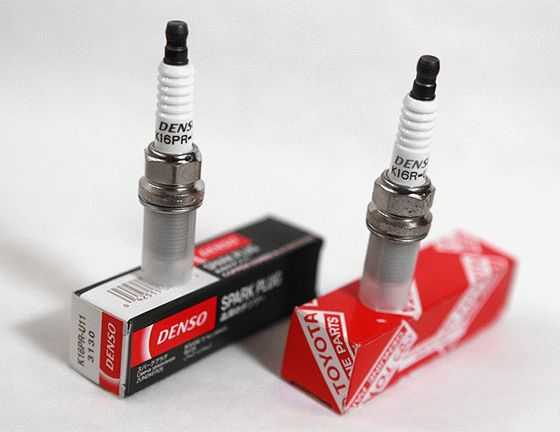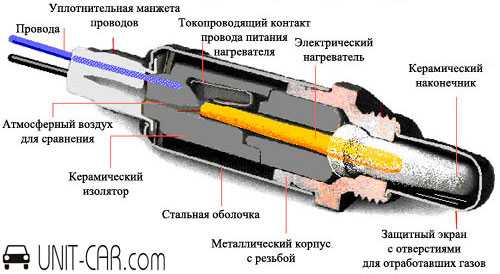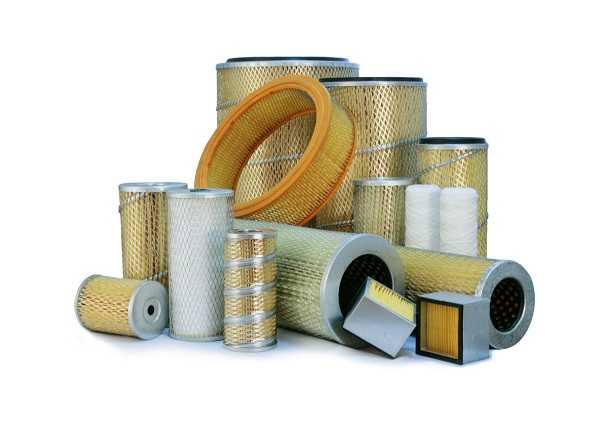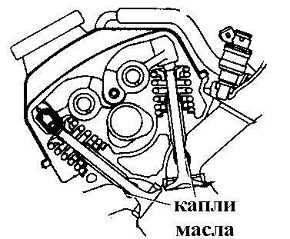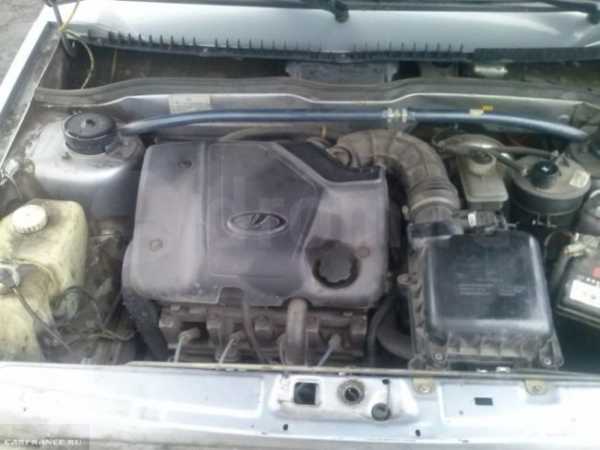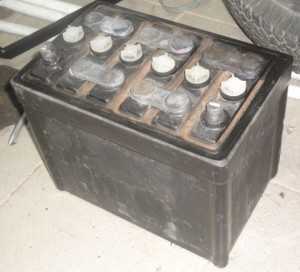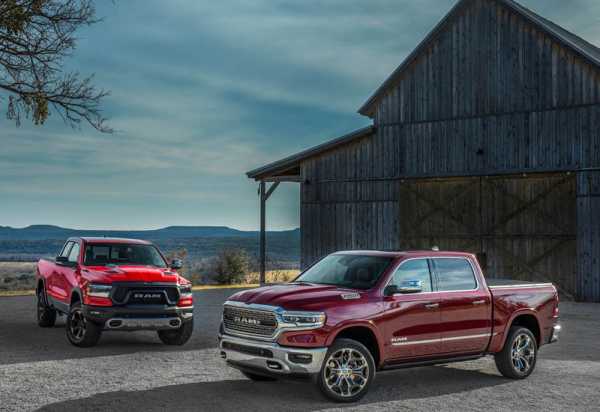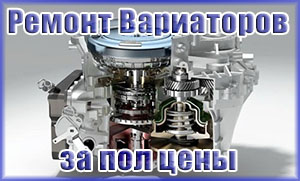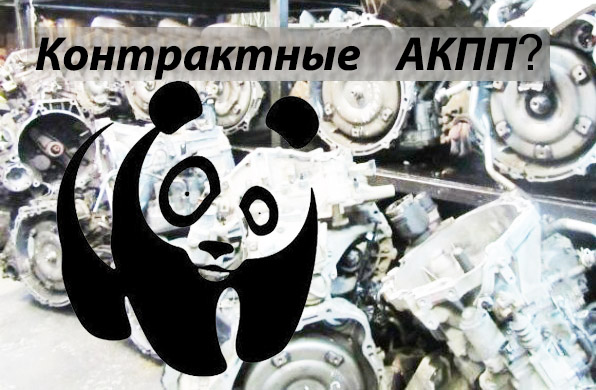Continuously variable transmission
List of automobiles with continuously variable transmissions
| This article needs additional citations for verification. Please help improve this article by adding citations to reliable sources. Unsourced material may be challenged and removed. (November 2007) (Learn how and when to remove this template message) |
|
|
|
|
|
The following is a list of automobiles that use continuously variable transmission (CVT) technology to transmit power from their engines to their wheels.
New automobiles equipped with CVT
- Chevrolet Spark 1.4 L
- Chery Tiggo 5 2.0 L
- Daihatsu Mira Custom 0.66 L 3 cyl
- Datsun Cross
- Datsun Go
- Fiat Punto 1.2 L
- Ford Fusion Hybrid 2.5 L 4 cyl
- Honda Accord option on all 4 cylinder models 2013 on
- Honda Activa Scooter 0.109 L
- Honda Airwave 1.5 L
- Honda City 1.5 L
- Honda HR-V 1.6 L
- Honda Jazz 1.2L/1.3L/1.4L/1.5L / Honda Fit 1.3 L/1.5 L
- Honda Odyssey (JDM)
- Honda Stepwgn
- Infiniti JX/QX60
- Lexus CT200h
- Lexus IS 300h
- Lexus ES 300h
- Mercedes-Benz A-Class
- Mercedes-Benz B-Class
- Microcar MC1/MC2 505cc 2 cyl diesel or petrol
- Microcar Virgo 505cc 2 cyl diesel or petrol
- Mitsubishi Lancer 1.6 L/1.8 L MIVEC 4 cyl with INVECS-III CVT (Asian version only) the 2008 version also
- Mitsubishi Lancer 2.0 L/2.4 L MIVEC 4 cyl with INVECS-III CVT 2008 (North America)
- Mitsubishi Mirage 1.0 L/1.2 L MIVEC 3 cyl with INVECS-III CVT
- Mitsubishi Outlander 2.4 L MIVEC 4 cyl with INVECS-III CVT (from 2007)
- Mitsubishi RVR/ASX/Outlander Sport 1.6 L /1.8 L /2.0 L MIVEC 4 cyl with INVECS-III CVT 2011
- Nissan Altima (from 2007, Model S and SE)
- Nissan Bluebird Sylphy 2.0 L
- Nissan Juke
- Nissan Maxima (from 2007, Model SE)
- Nissan Micra 1.0 L/1.3 L
- Nissan Murano 3.5 L
- Nissan Pathfinder (from 2013 and on)
- Nissan Qashqai 2.0 L
- Nissan Rogue 2.5 L, Model SL
- Nissan Sentra (from 2007 and on)
- Nissan Serena 2.0 L
- Nissan Skyline 350GT-8
- Nissan Teana 3.5 L
- Nissan Tiida / Versa
- Nissan X-Trail
- Peugeot 4007 2.4 16V
- Peugeot 4008
- Proton Exora Bold 1.6 L CFE (2011–present)
- Proton Inspira 2.0 L 4 cyl
- Proton Prevé 1.6 L (CFE Turbo / IAFM+ NA) (2012–present)
- Proton Saga FLX 1.3 L 4 cyl (2011–present)
- Renault Koleos
- Subaru Forester (Lineartronic)
- Subaru Impreza
- Subaru Legacy (Lineartronic)
- Subaru Outback (Lineartronic)
- Subaru Stella
- Subaru XV
- Subaru WRX
- Toyota Avalon Hybrid
- Toyota Avensis
- Toyota Camry
- Toyota Camry Hybrid
- Toyota Century
- Toyota CHR
- Toyota Corolla
- Toyota Highlander Hybrid 3.3 L 6 cyl
- Toyota Noah
- Toyota Passo 1.0 L 3 cyl
- Toyota Prius 1.5 L 4 cyl (–2009)/1.8L 4 cyl (2010–)
- Toyota Prius c 1.5 L 4 cyl (2012–)
- Toyota RAV4 2.0 L 4 cyl
- Toyota Verso 1.8 L
- Toyota Yaris 1.33 VVT-i CVT
- Toyota Yaris Hybrid 1.5 VVT-i CVT
Super Cars with CVT
- Koenigsegg Regera toyota harriar cvt gear box
Old automobiles equipped with CVT
- Aixam 400, 500, 500.5 A751 petrol and diesel 1990 on. Belt and Variator CVT supplied by CVTech-IBC Canada.
- Audi A4 2.0/1.8T/2.4/3.0/1.9 TDI/2.0 TDI/2.7 TDI
- Audi A5 2.0 TDI
- Audi A6 2.0/1.8T/2.4/3.0/2.5 TDI
- Autobianchi Y10
- Constantinesco (1926)
- DAF 33
- DAF 44
- DAF 46
- DAF 55
- DAF 66
- DAF 600
- DAF 750
- DAF Daffodil (types 30, 31 and 32)
- Daewoo Matiz II with E3CVT (Currently GM Daewoo)
- Daihatsu Charade
- Dodge Caliber 2.0 L, 2.4 L
- Fiat Panda
- Fiat Punto
- Fiat Uno
- Ford Escape Hybrid 2.3 L 4 cyl
- Ford Fiesta
- Ford Five Hundred
- Ford Focus C-Max 1.6 L TDCi 110 PS
- Ford Freestyle 3.0 L 6 cyl
- Honda Civic ESi
- Honda Civic HX
- Honda Civic Hybrid 1.3 L 4 cyl
- Honda Insight 1.3 L 4 cyl
- Honda Stream
- Jeep Compass 2.0L,2.4 L
- Jeep Patriot 2.0L,2.4 L
- Lambert (automobile), 1905
- Lancia Y10
- Lexus HS250h
- Lexus GS450h 3.5 L 6 cyl
- Lexus LS600h 5.0 L 8 cyl
- Lexus RX400h 3.3 L 6 cyl
- Mercury Montego 3.0 L 6 cyl
- MGF
- MGTF
- Mini Cooper
- Mitsubishi Colt 1.5 L MIVEC 4 cyl with INVECS-III CVT (Asian-Oceanian version only, 72 kW)
- Nissan Cedric 300VIP-Z and 300LX-Z S [1]
- Nissan Cube
- Nissan Gloria 300 Ultima-Z and 300 Ultima-Z V [1]
- Nissan Micra
- Nissan Primera 2.0 L
- Opel Vectra 1.8 L
- Rover 25
- Rover 45
- Rover Metro
- Rover 100
- Rover Streetwise
- SEAT Exeo
- Saturn Ion Quad Coupe (2003-2004)
- Saturn Vue 2.2 L AWD (2002-2005), 2.2 FWD (2002-2004)
- Scion iQ
- Subaru Justy ECVT/Justy 4WD ECVT
- Subaru R1
- Subaru R2
- Suzuki SX4 (2010 onwards)
- Toyota Aurion Hybrid
- Toyota Ist
- Toyota Passo 1.3 L 4 cyl
- Toyota Ractis
- Toyota Wish 2.0 L 4 cyl
- Union
- Volvo 300 series
- Volvo 66
References
- ^ a b http://www.nissan-global.com/GCC/Japan/NEWS/19991001_0e.html
Pros and Cons of Continuously Variable Transmissions
A growing number of cars and sport utility vehicles now come with a continuously variable transmission (CVT) instead of a conventional automatic. CVTs have been used in passenger cars since 1989, but if you haven’t been car shopping in several years a CVT may be new to you. Here’s a quick overview of the technology.
What is a Continuously Variable Transmission?
A conventional automatic transmission uses a complex series of gears to send the engine’s power to the wheels. But a CVT has no gears at all. Instead, it uses a pair of variable-width pulleys that are connected by a belt. One pulley connects to the engine, while the other sends power to the wheels. They key here is that the width of the pulleys change according to how much power is needed. One gets larger as the other becomes smaller. This allows a CVT to deliver strong and seamless acceleration. A second, less common, type of CVT uses a series of discs and rollers.
Though there are no gears in a CVT, some allow manual “shifting.” Here, the belt-and-pulley system moves to preset points that simulate changing gears. This is accomplished either by moving the shift lever or clicking on steering-wheel-mounted paddles. As an example, the CVT in the 2019 Subaru Ascent SUV comes with eight of these shift points.
In the latest twist on the technology, the CVT in the 2019 Toyota Corolla Hatchback adds what’s called a “launch gear.” This is like first gear in a standard transmission. The launch gear handles the car’s acceleration at speeds up to 25 mph, after which the transmission switches over to the belt-and-pulley system. Toyota says having the launch gear enables stronger and smoother acceleration from a standing start.
How Does a CVT Work?
Automakers are using CVTs for several reasons. A CVT can get maximum power out of a small engine for quicker and more responsive acceleration. That’s why you’ll most often find CVTs used in vehicles having four-cylinder engines.
CVTs deliver seamless acceleration without interruption for gear shifts. They also eliminate abrupt downshifting when additional power is needed for passing. A CVT likewise operates smoothly while climbing hills. This avoids the “gear hunting” you’ll often feel with a conventional automatic transmission. And because a CVT is lighter in weight and delivers better power efficiency, it helps improve a vehicle’s fuel economy. That’s why many hybrid-powered vehicles come with CVTs.
But some drivers find the sensation of continuous acceleration without shift points to be unnerving. Another common complaint is that a CVT sometimes tends to make a vehicle seem excessively loud or harsh. That’s because it forces the engine to run at high rpm (revolutions per minute) as the vehicle gets up to speed.
Are CVT Problems Common?
CVTs are not without mechanical problems, however. And as with conventional automatics, it can be expensive to repair or replace a CVT. Search the website www.carcomplaints.com and you’ll find a number of common issues with CVTs. These include overheating, slipping, jerking, shuddering and a sudden loss of acceleration. As with any transmission, there are some cases where a CVT has failed altogether. The CVT belt, in particular, can be subject to excessive wear and stretching. In some extreme cases, owners filed lawsuits against automakers because of poor and unreliable CVT performance.
Which Cars Have a CVT or an Automatic Transmission?
If you’re car shopping, it may be difficult to tell whether a vehicle is equipped with a CVT or a standard automatic transmission. Both types look the same, with a shift lever that includes drive, neutral, and park selections.
CVTs are most commonly used in Mitsubishi, Nissan and Subaru cars and sport utility vehicles. Honda and Toyota are now including them in a wider range of models as well. They’re still far more common among Japanese import brands than the domestics or European imports. Generally, a given model offers either a CVT or a conventional automatic. The 2018 Honda Accord is the rare vehicle that offers both types. But in this case either transmission is available only with a specific engine, so buyers still don’t have a choice in the matter.
There are a number of ways to tell which type of transmission a given vehicle includes. You can find this information on an automaker’s website, a printed brochure or the window sticker if it’s a new vehicle. If you’re used car shopping it may require added research. Fortunately, our Car Research section provides full details on both new and used models.
Editor’s note: This article was originally published in November 2014. It has been completely updated for accuracy and comprehensiveness.
The continuously variable transmission (CVT)
The variable diameter pulley CVT
A CVT transmission consists of a driving shaft and a driven shaft, each of which has a pulley splined onto it. Each pulley comprises two conical sheaves that face each other. A metallic pushbelt runs in the V-groove between the two conical sheaves of each pulley.
The pushbelt (See glossary) forms the link between the driving and the driven shaft, transmitting the drive power by means of shear force from the engine to the wheels. The transmitted shear force makes the pushbelt as strong as a steel rod, thereby enabling torques of over 400 Nm to be transmitted. Pushbelt is made of hundreds of specially pressed steel elements which are strung together between two rings made of layers of high-alloy steel. This design makes the pushbelt flexible and at the same time strong enough to transmit torque.
Variable pitch radius principle
One sheave of each pulley can slide along each its shaft, continuously adjusting the pitch radius of the pushbelt and, in turn, the transmission ratio. The variable distance between the sheaves thus offers infinitely variable ratios. The continuously variable transmission ratio enhances ride comfort and dynamism.
Optimal engine operation
The special CVT transmission mechanism and electronic control provide an optimal balance between required torque and engine speed, thus allowing the engine to operate as efficiently as possible at all times. The gear ratio range (See glossary) from low to high gear can be high compared to manual gearbox, attaining a final gear reduction ratio of about 6, thanks to pulley and steel belt improvements and the use of high performance ATF (Automatic Transmission Fluid). With a wide ratio spread and highly precise control, the CVT delivers improved acceleration and fuel economy. However, those features have to be balanced with the increase in friction losses due to contact between pushbelt and puleys. Indeed, gain of having optimal engine operating points is lowered by greater frictions within the transmission system.
Toroidal CVT
The principle of toroidal CVT is the same as variable diameter pulley CVT. The engine’s power is transmitted to an input disc the rotational motion of which is transferred to the power rollers and then from the rollers to an output disc. By changing the tilt of the power rollers continuously, the toroidal CVT executes smooth and continuous gear ratio changes. The size of the circle traced by the contact point between the input disc and the power rollers and that of the circle traced by the contact point between the power rollers and the output disc vary according to the tilt of the power rollers. The ratio of the sizes of the circles corresponds to the ratio of the rotational speeds of the input and output discs, which is equal to the gear ratio. When the circle on the output disc side is larger, the output disc rotates faster than the input disc. This corresponds to the low gear range of a conventional transmission (Low in the diagram below). Conversely, when the circle on the output disc side is smaller, the output disc rotates faster than the input disc. This corresponds to the top gear range of a conventional gearbox (High in the diagram below).
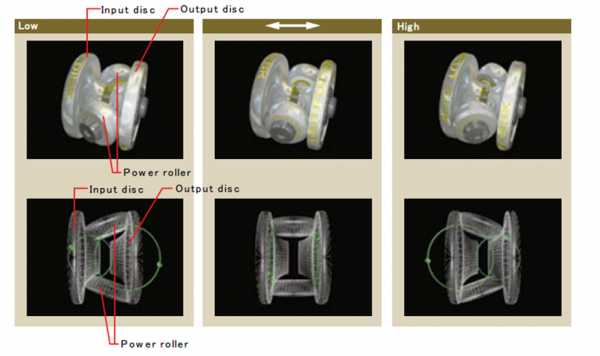
The CVT’s biggest problem has been user acceptance. Because the CVT allows the engine to rotate at any speed, the noises coming from under the hood sound odd to ears accustomed to conventional manual and automatic transmissions. The gradual changes in engine note sound like a sliding transmission or a slipping clutch — signs of trouble with a conventional transmission, but perfectly normal for a CVT. Flooring an automatic car brings a lurch and a sudden burst of power, whereas CVTs provide a smooth, rapid increase to maximum power. To some drivers this makes the car feel slower, when in fact a CVT will generally out-accelerate an automatic.
Automakers have gone to great lengths to make the CVT feel more like a conventional transmission. Most CVTs are set up to creep forward when the driver takes his or her foot off the brake. This provides a similar feel to a conventional automatic, and serves as an indicator that the car is in gear. Other CVTs offer a “manual” mode that simulates manual gear changes.
Source: Bosch, NissanCVT technology appears to be very appealing from an engineering point of view. However, the customer acceptance is rather low in European countries due to the fact that the driver noise perception is different from a mechanical or step automatic transmission. Do you think final customer would go over this noise issue if the fuel economy gains would be higher with CVT?
Are CVT Transmissions Reliable? » AutoGuide.com News
Vehicle transmission technology is improving rapidly, giving consumers a wealth of choices. Continuously Variable Transmissions (CVTs) have become a very common option. CVTs are designed to be more fuel efficient than traditional automatic transmissions, but are they reliable?
A CVT transmission, unlike a typical automatic transmission with gears, uses two pulleys held together by a very strong steel belt. The diameter of one of the pulleys continuously adjusts to keep engine rpm at the most efficient level for the particular driving situation. CVTs have no fixed gears like a conventional automatic transmission and eliminate the sensations of gear changes.
ALSO SEE: Should You Buy a Car with a CVT Transmission?
The video below made by Toyota shows how a CVT operates differently from a regular automatic and also highlights advantages over a normal auto box in different driving situations:
Brands like Toyota, Nissan, Honda, and Subaru have made CVT transmissions standard in most of their model lineups, while manual transmissions or traditional automatics are optional.
Jake Fisher, Director of Auto Testing at Consumer Reports, says that CVTs have a natural disadvantage because some of them are programmed in such a way that makes consumers think they are broken or working improperly when it is actually not the case.
Conventional eight or nine-speed automatics have a direct, connected feel that makes it easier for consumers to judge their performance. A traditionally programmed CVT with no stepped gear feeling may cause a consumer to misjudge its regular character as a sign of unreliability, which is something Fisher says automakers are working to mitigate.
“Auto manufacturers are consistently improving on their fuel efficiency standards and transmissions like the CVT help to reach those goals but sometimes the results can end up being mixed,” he says. He adds that some applications of CVTs work better than others. The Honda Civic/Accord models, for example, have well-programmed and responsive CVTs that eliminate the dreaded “rubber band effect.” Every CVT detractor you meet will most likely use that phrase at some point in their argument.
ALSO SEE: Should You Buy a Car with a CVT Transmission?
What is the rubber band effect? In a typical automatic gearbox, the revs are constantly fluctuating to match your changing speeds as you move through multiple gears. For the driver, there is a connected feel to how your car is putting power onto the road — the transmission changes gears and you feel a bit of a jolt. The CVT transmission takes a different approach. Any calls for more than moderate power makes the engine hold the revs at the highest possible peak until you reach your desired speed.
This approach is supposed to make the vehicle operate at its most efficient level whether cruising or accelerating, but drivers often experience a strange sensation with CVTs. “Because the revs in the vehicle are not necessarily moving in tandem with your level of speed, there is a whole disconnect to the driver operating a car with a CVT. You never have a clear idea how your vehicle is transferring power onto road surfaces,” Fisher says.
ALSO SEE: Which Continuously Variable Transmissions Are the Best?
He experienced this personally while driving a CVT-equipped car on a snowy surface. There were instances where he was not sure if his wheels were slipping due to the snowy surfaces or if he was just feeling the CVT’s slipping sensation.
Automakers who have fully adopted this transmission are continually making improvements to this technology to make it feel more natural for drivers. Nissan has been using CVTs for quite a while and current units are very different from the early iterations.
Kyle Torrens, Product and Technology Specialist for Nissan, says, “The new generation CVT is now suitable for all of our engine range, achieving an improvement in fuel efficiency of up to 10 percent compared to the standard CVT. One major addition: delivering the feel of a more direct drive.” Nissan tweaks its CVTs often. Issues such as CVT friction and disconnected driving feel are investigated and improved on to create a more pleasant driving experience for customers. Nissan even programmed fake “shift points” for its CVT so drivers can feel it working.
Nissan also uses an algorithm to calculate the “wear” placed on the CVT and the fluid. Things such as miles, duty cycles, loads etc. are considered when formulating CVT fluid deterioration date. This is not unlike the algorithm method many manufacturers with CVT transmission vehicles use to determine CVT fluid replacement intervals.
Victor Paredes, a service advisor at Bay Ridge Nissan, New York, is familiar with the peculiarities of a CVT. “The cost of a CVT transmission flush is approximately 15 to 20 percent higher than that of a conventional automatic transmission flush. Also, despite lacking physical gears within the system, the intricate setup of pulleys and belts actually make the transmission have to work in a more synchronized way than a regular automatic transmission would.”
This means that more things could go wrong quicker with a CVT because there are more repeated movements of parts within the system and wear and tear can happen quicker than in other types of transmissions, which means durability and reliability might not be as good as, say, a seven-speed automatic in the long-term.
The Verdict: Are CVT Transmissions Reliable?
At the end of the day, it becomes more of a question of are CVT transmissions more “reliably” better to drive than a question of total mechanical reliability and that all comes down to consumer preferences.
Even more importantly, CVT transmissions have a strict and delicate service maintenance schedule that customers should try to adhere to. Treating a CVT transmission like a regular automatic transmission can cause reliability issues down the road that can end up making the transmission more costly to repair than a conventional automatic. Proper maintenance goes a long way into extending a transmission’s life, whether it’s a CVT or a traditional one.
Filed under: Featured Articles Technology Tags: continuously variable transmissions, CVT
"Питер - АТ"
ИНН 780703320484
ОГРНИП 313784720500453
